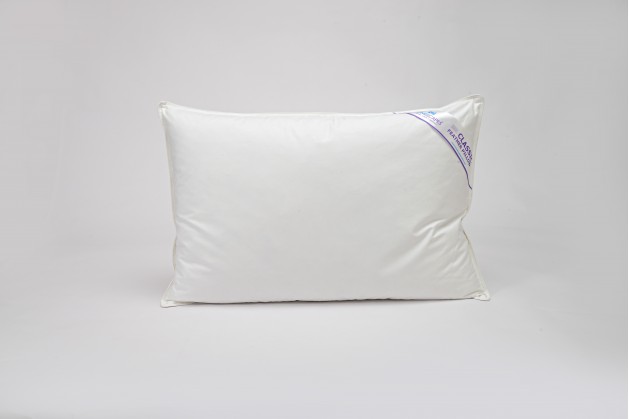
How Your Pillow Might Harm Your Health
October 25, 2019Snuggling into a soft fluffy pillow after a long busy day is what everyone looks up to. Drifting into blissful sleep ensures that you wake up relaxed and ready to face the new day. Staying healthy and happy requires getting about 8 hours of sleep. You have to understand that your pillow can harm your health regardless of how cozy and soft it might be.

How a pillow can make you ill
Various conditions result from sleeping on a chemical-filled pillow or mattress. Some pillows come with polyurethane foam. This releases chemicals into the air along the way making you get nausea and regular headaches. Pillows with synthetic materials are prone to dust mite build up. Sleeping on this pillow causes sinus congestion and problems with respiration. Other pillows come with flame-retardants that irritate the skin. However, a natural pillow is free from such issues.
A pillow absorbs bacteria, sweet, make up, drool, and hair products every night. Your pillow might look clean but actually dirty. The 7 to 8 hours of sleep expose your skin to all material in the pillow for various hours a month. A clean pillow becomes dirty after a night or two. Old dirt and microorganisms get close to your face clogging pores and leading to inflammation. This explains waking up with breakout of various skin issues like acne. Flipping your pillow often and turning the pillow inside out weekly limits exposure to these materials. Choosing right rug for your living room is also important.
Options for pillow fillings
Natural latex
Opting for a latex pillow in Singapore is a smart move. This offers extra support to alleviate back pain, neck and shoulder problems. Natural latex pillows are breathable and resistant to dust mites for its anti-microbial properties. This material is hypoallergenic making the pillow ideal when having allergies. A latex pillow is affordable and offers extra support for about 15 years.
Synthetic materials
These pillows come with microfiber and are machine washable and cheap. It makes the pillows appeal to most people with a low budget but want to sleep on many pillows. Synthetic pillows attract mold and dust mites. Limiting the risk of these requires replacement every two years. It means these pillows are costly in the long run. To tell a polyester pillow that needs replacing, fold it and place a book on top. A pillow held in place by the book requires a replacement.
Cotton and wool
The wicking properties of wool repel moisture. Pillows with cotton or wool are from natural and breathable material to lessen sweat absorption. Additionally, this pillow has no risk of mold development. Pillows with cotton or wool are ideal for people with chemical allergies. Keep in mind that this pillow lasts for about 3 to 5 years.
Feather and down pillows
Pillows with feathers are the best at repelling dust mites. However, these pillows are not a good choice for people with feather allergies. This pillow is less likely to attract dust mites after 6 months compared to pillows with synthetic material. The best thing is that feather and down pillows last for about 10 years. You only ditch it if it can’t regain shape after plumping.
When to replace your pillow
Your pillow doesn’t last forever. Its life expectancy depends on fillings and your care for it. Perhaps you regularly wake up with neck or back pain. There is even a risk of worse symptoms on waking up. It might be a sign that you need to replace your pillow. The chances are high that you have used your pillow past its use-by-date.
Signs to tell you need a new pillow include:
- Lack of fold
- Waking up tired
- Noticeable lumps in the foam
- Yellowing from sweat or bleach
- Repeated neck and shoulder pain
- Regular sneezing and breakouts
- Regular re-fluffing to become comfortable
Understanding allergens and irritants in pillows
Everyone spends about a third of their lives sleeping. The time spent sleeping on your pillow comes with a risk of exposure to allergens and pollutants that build up in a pillow with use. Exposure to chemicals in pillows disrupts hormones, causes cancer, and triggers allergic reactions. The risk defers according to nature of the pillow. Some of the irritants and allergens likely to be present in your pillow include:
Flame-retardants
Some foam pillows come with flame-retardants to meet flammability standards. These retardants have chemicals linked to neurological damage, endocrine disruption, and cancer. Memory foam pillows have highly combustible polyurethane. Manufacturers apply polybrominated diphenyl ethers in foam pillows to retard flames. These ethers are not biodegradable encouraging buildup and disrupt hormones. The rule of thumb is to opt for a pillow with natural material free from flame-retardants.
Volatile Organic Compounds (VOCs)
Off-gassing is chemical smell from memory foam pillows. The chemicals in the pillow break down and disappear into the air releasing VOCs. These organic compounds turn vapor to gas with different levels of toxicity and effects. Odor resulting from off-gassing pillows disappears after a few weeks.
Memory foam mattresses have more chemicals than other mattress options. This makes these pillows to have more VOCs that affect people in different ways. Avoiding this risk requires opting for a pillow free from VOCs and meet safety certification standards.
Perfumes and deodorizers
Some memory foam pillows come with perfumes and deodorizers for masking the chemical smell from the foam. These perfumes have chemicals not good for inhaling. This makes it hard to sleep on this pillow. Memory foam pillows have the most chemicals with some having traceable amounts of petroleum. Cleaning feather and down pillows with industrial chemicals before treating with deodorizers. This makes sleep hard especially a new pillow.
How a pillow affects your hair
Do you usually wake up with bed head? This might be resulting from your pillow. The pillow grabs onto hair strains holding it hard when moving around during sleep. This pressing and pulling uses unflattering locks next morning while encouraging hair breakage and splits. The pillowcase sucks up hair oils making drier and frizzier locks.
Avoiding this requires upgrading to a satin or silk pillowcase. This makes hair slide on the surface and doesn’t suck natural oils from the hair. Alternatively, avoid going to bed with wet hair or keep it tied in braids to keep it secure with fewer chances of breakage and friction.
Bottom line
Quality sleep is essential for overall health and wellbeing. A pillow contributes greatly to your sleep experience. Opt for a natural latex pillow to avoid exposure to VOCs, allergens and dust mites. This pillow is long lasting to give you good value for money.

